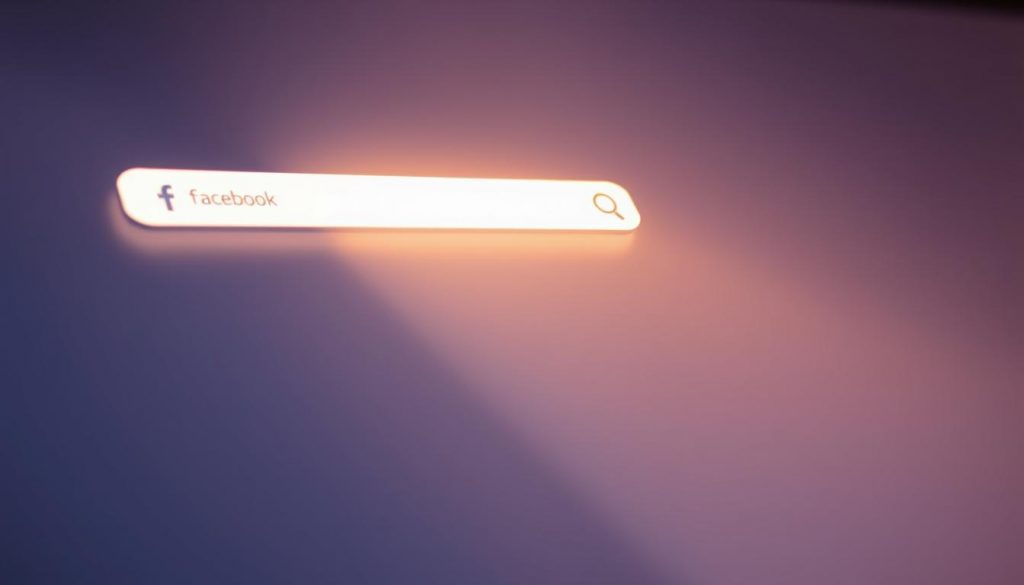We know how it feels when budgets disappear and growth stalls. Small business owners pour time and money into campaigns, then watch performance slip. That frustration is personal; we have seen it in clients and felt it ourselves.
In this article we map common problems to clear, practical fixes. You’ll get a business-focused strategy that protects money and drives measurable results. We draw on proven guidance — from scalable structures to creative benchmarks — so you can act fast.
Our aim is simple: help you spot where audience, offers, creative, and placements mismatch. Then we show easy steps to fix campaigns and lift performance. By the end you’ll have a repeatable workflow to explain to your team and scale responsibly.
Key Takeaways
- Stop optimizing for vanity metrics and align strategy to revenue.
- Match audience to offer to prevent wasted spend.
- Use high-quality creative to lower costs and boost engagement.
- Structure campaigns for scale with clear testing routines.
- Track the right KPIs so every change supports business results.
- Apply the solution checklist in Ads Manager today to restore performance.
Search Intent and Why Facebook Ad Mistakes Still Cost You Money Today
Search intent drives outcomes. When people look for information, they expect clear answers and fast fixes. We focus on practical steps you can run this week to cut waste and improve results.
Start by matching objective to funnel. Use conversion or landing-page campaigns instead of engagement-only approaches. That aligns spend to revenue and stops budget from drifting to vanity metrics.

Set your Ads Manager columns to show CTR, CPC, CPM, frequency, and link clicks. Those numbers reveal what’s driving cost. With engagement-first creative you can lower CPM and improve delivery.
We translate complex tactics into steps: simplify account structure so the system can learn, choose objectives that map to revenue, and build measurement guardrails. Do this and you’ll see lower costs and higher conversion in days, not months.
- Quick wins: adjust objectives, surface the right data, and swap weak creative.
- Protect ROI: set budgets and targets that reflect your margins.
- Test smart: one variable at a time so you learn faster.
Missing the Target: Poor Audience Targeting That Tanks Relevance
A precise audience is the difference between waste and results. Small demographic misfires — like the wrong age band or broad location — can collapse relevance and drive up cost. We start by narrowing the population you actually want to reach.
Use real customer signals. Pull age, location, job seniority, and purchase behaviors from your best buyers. Then run Audience Insights on Facebook to surface interests, brands, and behaviors tied to actual intent.

- Build segments from customer demographics and the platform data you collect.
- Layer niche interests at the ad set level instead of one broad bucket.
- Compare projected reach vs total audience to right-size campaigns and budgets.
- Add geo-specific copy and page cues; local signals lift conversion.
- Test small, track ad set level performance, and scale only proven segments.
Tip: Exclude low-value groups and document each test. This keeps your ads efficient and improves long-term advertising performance.
Low Audience-Offer Match: Serving the Wrong Ask to the Wrong People
Serving the wrong offer to the wrong crowd wastes budget and attention. We map three audience temperatures so your message fits intent and drives results.
Map ice-cold, lukewarm, and lava-hot audiences to different offers
Ice-cold audiences need discovery content. Offer checklists, demos, or helpful guides to build trust.
Lukewarm people respond to education and social proof. Use product examples, case studies, or email opt-ins.
Lava-hot audiences expect a clear conversion path. Give a strong CTA, a simple checkout, and a clear incentive.
Measure relevancy via engagement to lower CPC and raise CTR
Engagement is a relevance signal. Track CTR, post-click behavior, and page actions by audience slice. Higher engagement often leads the facebook algorithm to reward your creative with cheaper delivery.
Example: cold content → remarket to opt-ins → conversion retargeting. Measure conversion rates by audience temperature and adjust offers where results lag.
| Audience Temperature | Best Offer | Key Metric |
|---|---|---|
| Ice-cold | Value-first content (checklist, demo) | Engagement / CTR |
| Lukewarm | Education + social proof (case study) | Site time / opt-ins |
| Lava-hot | Direct conversion (discount, fast checkout) | Conversion rate / CPA |
Targeting Audiences That Are Too Broad
Oversized audiences let low-probability users consume your budget before high-potential buyers see anything. We see this often: ad sets with 20M+ pooled people dilute delivery and raise cost.
Use projected reach versus total number when you set up campaigns. If your setup shows 1.1M potential but only 234k reachable, roughly 850k remain unseen. That gap is a sign to narrow the pool.
Restrict with excludes. Remove low-intent interests, irrelevant demographics, and behaviors that bleed spend. Split large groups into themed ad sets by intent so your creative fits the audience.
Let early data guide decisions. Pause weak segments, expand winners, and avoid stacking unrelated interests. Build separate campaign buckets for prospecting and remarketing so budgets don’t cannibalize each other.
| Check | Trigger | Action |
|---|---|---|
| Projected reach gap | Potential 1.1M vs reachable 234k | Narrow audience; add excludes |
| Delivery concentration | High spend, low conversions | Split by intent; tailor creative |
| Budget drain | Large pools with low CTR | Refine interests; test small |
Not Leveraging Custom Audiences and Lookalikes
Remarketing and seeded lookalikes unlock better conversion paths from the traffic you already own. We focus on turning simple site signals into efficient campaigns that lower cost per conversion and lift long-term results.
Start with data you control. Install the pixel and build custom audiences from site visitors, key landing pages, and thank-you pages. KlientBoost notes remarketing to these groups often drives stronger conversion rates; Scoro reported 6x more conversions at the same budget.
Practical setup
- Run Lead ads to capture opt-ins and nurture them to reduce later conversion cost.
- Create micro-behavior segments—product viewers, quiz finishers—to seed high-quality lookalikes (eCommerceFuel example).
- Use separate campaigns for prospecting lookalikes and remarketing; tailor offers and creative per audience.
| Seed Source | Best Use | Optimization Tip |
|---|---|---|
| Thank-you pages | High-intent remarketing | Set short membership windows for fast buyers |
| Lead ads opt-ins | Nurture sequences | Sync CRM; map events in Manager to real conversions |
| Micro-behavior segments | Lookalike seeding | Start at 1% lookalike; scale to 2–5% by region |
Measure and iterate. Map events in Ads Manager so optimization targets conversions, not soft proxies. Test creative that matches the seed behavior and compare lift vs. interest-based targeting. With clean seed data you should see better results at the campaign level.
Not Excluding Past Converters and Ignoring Frequency
When the same people see your creative too often, cost rises and engagement falls. KlientBoost data shows that around frequency 5, CPC increases and CTR drops. That makes campaigns less efficient and wastes money.
Set exclusions for purchasers and thank-you page visitors. Use dynamic exclusions for checkout-complete and other key pages so the system automatically suppresses recent buyers.
- Exclude purchasers and thank-you page visitors to avoid wasting money on people who already converted.
- Monitor frequency; when it nears 5, rotate creative to prevent audience decay.
- Build suppression lists by recency (7/30/90 times) and tailor offers by lifecycle stage.
- Cap frequency in the campaign to protect results while keeping reach for net-new people.
Track by creative cohort so you know how long a headline or visual carries. Report saved cost from exclusions to show the financial impact to your team.
Relying on Boosted Posts and Page Like Campaigns Instead of Real Objectives
It’s easy to confuse social signals with customer intent — and that costs you. Boosted posts and page like campaigns inflate visible metrics without reliably lifting revenue. That makes budgeting and measurement harder.
Why vanity metrics don’t translate to revenue
Page likes often have low organic reach. Race Directors HQ found organic reach near 1–5%, which means a paid like can translate to $20–$100 per engaged follower in real cost.
Boosting a post limits targeting, budgeting, and placement options. That reduces control and raises cost per meaningful action.
Build conversion or landing page view campaigns in Ads Manager
Use the manager to run conversion or landing page view campaigns. These objectives tell the system to find people likely to take action, not just view content.
Lead with focused landing experiences, not generic feed post content. Allocate money to objectives tied to pipeline metrics and test split experiments for creative and audiences.
- Keep posts for community and content; keep campaigns for measurable results.
- Use custom audiences and exclusions that boosting can’t manage well.
- Track by objective so you compare like for like and protect your marketing budget.
Creative Pitfalls: Facebook Ad Mistakes That Fail to Grab Attention
Strong visuals and crisp hooks decide whether people pause or keep scrolling.
Lead with on-brand images or short video that match the offer. KlientBoost finds images drive 75–90% of performance, so use clear composition and a single focal point.
Use bold color, smiling faces, and high contrast to stop the scroll. Follow specs (1200×628 or square/vertical for feed and reels) so your creative fills the screen and looks native.
Optimize for short attention spans
Keep copy tight: one strong hook, one benefit, one CTA. Short videos (≤20s) should open with a compelling moment and close with a clear CTA.
Design for mute viewing and accessibility
Add captions and avoid relying on sound. High text density can still hurt delivery, so use minimal overlays and run the platform’s text overlay check when needed.
- Match landing pages: visual promise must align with post-click content.
- Test creative angles: problem, solution, and proof to see what drives engagement.
- Build cadence: rotate winners and refresh visuals before frequency drags performance down.
| Element | Best Practice | Why it matters |
|---|---|---|
| Images | 1200×628, bold color, single focal point | Drives 75–90% of initial attention |
| Video | ≤20s, strong first 3s, captions, CTA | Higher completion and conversion on mute autoplay |
| Text overlay | Keep minimal; check density with tool | Too much text can reduce delivery and engagement |
| Creative testing | Rotate angles weekly; feed winners to scaling tests | Maintains low cost per action and steady performance |
Using the Wrong Ad Types and Placements
A mismatched format or placement often explains poor delivery and rising costs. Choose formats with the goal in mind. The right option helps reach people who will act. The wrong one wastes budget and lowers performance.
Test formats: try video, carousel, Lead ads, and dynamic product options to see what your audiences prefer. News Feed, Stories, Reels, and Right Column behave differently. Each place needs matched creative specs to avoid delivery penalties.
- Pick by goal: use video for story-led campaigns, carousel to show range, Lead ads to capture interest, and dynamic for catalog remarketing.
- Enable multiple placements: let the system optimize delivery across Feed, Stories, and more. This often lowers cost per action.
- Tailor creative: adapt ratios, copy length, and CTA to each place so quality stays high and costs stay low.
- Measure at placement level: review where performance succeeds and cap spend where it lags.
Document a simple strategy: which formats win at each funnel stage, for which audiences, and with which offers. Test cleanly and scale the formats that prove efficient.
Budgeting and Optimization Blunders That Waste Spend
Smart spending starts with structure, not tighter controls on every ad set. Use campaign-level budgeting so the system shifts spend to the best-performing ad sets automatically.
Give optimization time. Allow learning windows before calling winners or losers. Pausing too soon prevents the campaign from finding efficient delivery.
Test systematically
Run clean tests. Change one major variable at a time—offer, audience, or creative—so your data points to the real cause of shifts in results.
- Consolidate where possible; over-fragmented structures hurt delivery and inflate costs.
- Keep budgets matched to audience size; too small stalls delivery, too large can spike cost.
- Don’t duplicate identical creative across campaigns; preserve social proof to lower CPM.
Monitor performance daily, but act weekly unless there is a clear failure signal. Build a simple roadmap with hypotheses and success criteria. Then report learnings with context so stakeholders see how each change improves business-level results.
Measurement Mistakes in Ads Manager: What You’re Not Tracking Is Hurting You
Too many decisions hinge on a dashboard that doesn’t show the right numbers. We recommend a focused set of columns so the story in your reporting is clear and action-oriented.
What to surface first
Customize your columns to include CTR, CPC, CPM, frequency, link clicks, and conversions. These metrics give immediate insight into delivery and creative health.
How to view reports
Segment by audience temperature and funnel stage. Break out data by cold, warm, and hot groups so you judge performance by the right benchmark.
- Add breakdowns by placement and device to find where efficiency clusters.
- Use custom conversions and compare pre-click and post-click metrics to spot promise-to-page gaps.
- Build saved reports and a short diagnostic list (delivery, learning phase, event fires) for quick troubleshooting.
Make weekly reviews a ritual. Use annotations for seasonality or promotions. Small, timely changes compound into big performance gains.
Landing Page Mismatch: Sending Traffic to the Wrong Place
Traffic without a clear landing page is like sending warm leads into a maze. You pay for clicks, then risk losing people on a homepage or third-party checkout. That wastes budget and lowers conversion.
A focused page wins. Route paid campaigns to a purpose-built page that mirrors the ad’s promise. Race Directors HQ warns against sending traffic to third-party registration pages or a site homepage. Keep control of tracking, forms, and audiences on your own website.
- Above the fold: make dates, price, and main benefits obvious so people answer “is this for me?” fast.
- One clear CTA per page. Remove extra links and distractions to keep the conversion path direct.
- Embed on-site forms or use native capture to lower friction and improve completion rates.
- Instrument events for scroll depth and button clicks so you can diagnose and fix drop-off points.
| Issue | Impact | Fix |
|---|---|---|
| Homepage destination | High drop-off; low conversion | Route to focused landing page matching the ads |
| Third-party checkout | Lost tracking; weak retargeting | Use on-site forms and retain ownership of audience data |
| Slow load times | Increased acquisition cost | Optimize assets; prioritize speed on mobile |
Build retargeting segments from page viewers and abandoners. That lets you complete the journey with tailored messaging and better ROI on future ads. Small fixes on the page often lift conversion more than creative tweaks alone.
Facebook Ad Mistakes
Work backward from ticket price and margin to set realistic acquisition goals. If an entry fee is $50 and you want a $10 CPA, that math tells you what you can spend on media and still earn money.
Back-solving gives clarity. Translate margins into target CPC/CPA before you start testing. This keeps your strategy tied to business outcomes, not vanity metrics.
Set target CPC/CPA by back-solving from entry fees and margins
Calculate allowable acquisition cost from price and margin. Then split that into channel CPC and creative spend so you stay profitable at scale.
Be patient early; invest small to find message-market fit
Allow higher cost while you test. Use small budgets to learn which messages land. Once you find fit, scale to hit your target cost without wasting money.
Invest in quality creative to reduce costs over time
Quality creative compounds. Design and short video cut cost across months. Creative is an asset—spend where it lowers long-term cost and protects brand.
- Back-solve CPC/CPA so acquisition stays profitable at scale.
- Make sure targets match your category; early tests refine thresholds.
- Include remarketing in every plan — it’s usually the cheapest conversion lever.
- Use cohorts to watch how creative ages and refresh on a steady cadence.
- Tie strategy to business goals; stop funding tactics that don’t move core KPIs.
Document each test. Capture what worked and replicate it so your team repeats wins fast. Treat brand building and performance as partners; together they lower cost and save time for future marketing.
Conclusion
Finish strong by turning learnings into a repeatable checklist that protects budget and lifts results.
Make sure your plan ties to revenue: right objective, right page, right number to measure. Use this list weekly as a QA: audience fit, offer mapping, creative freshness, and measurement health.
Shift from boosting posts to structured campaigns that optimize for conversion. Keep one clear action per ad and simplify paths so customers can say yes faster.
Budget smart: use campaign-level CBO, set targets from margins, and review pacing over time. Refresh images, video, and content on a predictable cadence to avoid frequency-driven drops.
Watch the facebook algorithm signals—engagement and relevance lower cost and expand reach. Protect audiences, scale lookalikes from strong seeds, and close the loop by improving your page and website for better results.


